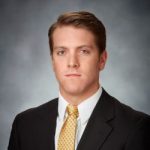The overtraining problem and why monitoring is essential

“Overtraining can best be defined as the state where an athlete has been repeatedly stressed by training to the point where rest is no longer adequate to allow for recovery. If sufficient rest is not included in a training program, then regeneration cannot occur and performance will actually plateau. If this imbalance between excess training and inadequate rest persists, then performance may even decline”
Overtraining syndrome | Junior Team Canada
We have all heard the stories of athletes who spend countless hours of practice in an attempt to perfect a particular technique or to make themselves that little bit faster and stronger in order to improve their overall performance. The ability of an athlete to dedicate themselves to their sport long after many others have gone home is often highlighted as one of the traits that sets the winners apart from the also-rans. In many cases this dedication is vital to success, but the problem is that often it can be counter-productive, as spending too much time training and without sufficient rest can lead to a decrease in performance level. As a result, the issue of overtraining has become a vital part in an athlete’s program in terms of understanding how to get the balance just right.
The training dilemma
The problem with overtraining is that it can sometimes be difficult to fully comprehend the idea that taking a break can be more beneficial to squeezing in an extra session. This dilemma is outlined by Michael Matthews in 8 Signs of Overtraining That Most People Don’t Know
Overtraining is an insidious trap because it goes against our natural instincts. In most endeavours in life, you can expect to receive rewards in proportion to what you give in time and effort. Work more and harder in your career, and you’ll usually grow your business or wind up getting promotions and raises
While, up to a point this is also true for sport, he suggests that the problem is that athletes can’t avoid the temptation of doing too much, and points out that research suggests that over 60 per cent of serious athletes will push themselves too hard at some stage during their career and fall into the trap of doing too much.
How overtraining affects athletes
There are practical examples to highlight just how much of a problem overtraining can be and these include the experiences of Olympic and college athletes where research has illustrated just how much they can be affected. A study led by Dr Marie-Elaine Grant, of the Institute of Sport and Health at University College Dublin and an IOC official, revealed that almost half the athletes who sought physio treatment in the London 2012 Olympics suffered injuries through overtraining. The study, published in the British Journal of Sports Medicine, revealed that 44% of athletes coming in for physio treatment for the first time in the Stratford Olympic village reported they had been overdoing it. These findings are backed up by a study carried out in Michigan State University entitled Overuse injuries harm athlete mind, body. This research illustrates that overuse injuries account for nearly 30 percent of all injuries sustained by college athletes – with more than half of those being suffered by women. Naturally, injuries such as strains, tears and twists to a knee, the lower back or to the hamstrings or upper thigh, may not be long term but they can severely hamper a training program or performance during competition. As a result, an athlete whose performance level drops below what they might have expected, may just miss out on glory. Aside from the physical impact, the research in Michigan State also points out that there may be a psychological effect of overuse injuries as co-author Tracey Covassin states:
Overuse injuries may present not only physical challenges but also psychological ones that could significantly affect an athlete’s recovery and performance
Monitoring is key to getting balance right
Some of the factors that lead to overtraining are listed by Jeff Gaudette in Overtraining: Why It Happens, How To Spot It & How To Dig Yourself Out as follows:
- Reaching too far in one training cycle
- Not taking a break between training segments
- Too many intense speed workouts
Of course, the key is to get the balance right between doing too little and doing too much, monitoring is essential to achieving this, according to the study How much is too much? (Part 1) International Olympic Committee consensus statement on load in sport and risk of injury’ which states:-
Regular athlete monitoring is fundamental to ensure appropriate and therapeutic levels of external and internal loads and thus to maximise performance and minimise the risk of injury
It is an approach that Tim J Gabbett agrees with in The training-injury prevention paradox: should athletes be training smarter and harder, when he reveals:
Appropriate training loads will assist in improving levels of fitness, and as a consequence will provide protection against injury. The benefits of this are that increased physical condition will improve individual performance and in team sports, ensure a higher proportion of players available every week
About Metrifit
Metrifit is a simple, effective athlete monitoring system that allows athletes to log their daily wellness and training responses through their mobile phone. Traffic light reporting is available for coaches to easily identify which athletes need attention or should be considered for training individualization along with more complex analytics when a number of weeks information is available including
- deviations from normal behaviour
- acute chronic workload ratio and
- issues and concerns at the individual and team level
Keeping track of these key factors and how they influence each other is a core part of athlete monitoring within Metrifit.
References
8 Signs of Overtraining That Most People Don’t Know By Michael Matthews
Overtraining syndrome
The role of sports physiotherapy at the London 2012 Olympic Games by Marie-Elaine Grant, Kathrin Steffen, Philip Glasgow, Nicola Phillips, Lynn Booth, Marie Galligan
Overtraining: Why It Happens, How To Spot It & How To Dig Yourself Out By Jeff Gaudette
How much is too much? (Part 1) International Olympic Committee consensus statement on load in sport and risk of injury
The training-injury prevention paradox: should athletes be training smarter and harder? Tim J Gabbett
The importance of knowing when an athlete has reached load limit | Metrifit


































 Previous Post
Previous Post





